Goose Hunting the Front Range


Sam Brunner
01/04/2023
Goose hunting along the front range of Colorado and Wyoming can be difficult and tremendously rewarding at the same time. Often seen as one of the highest pressured goose hunting areas in the west, birds wise up quickly and can be picky about where they visit throughout the year. We sat down with long time front range hunter and Infinite Outdoors staff member Sam Brunner to give you some insight on how to be effective when hunting here in the front range of Wyoming and Colorado.
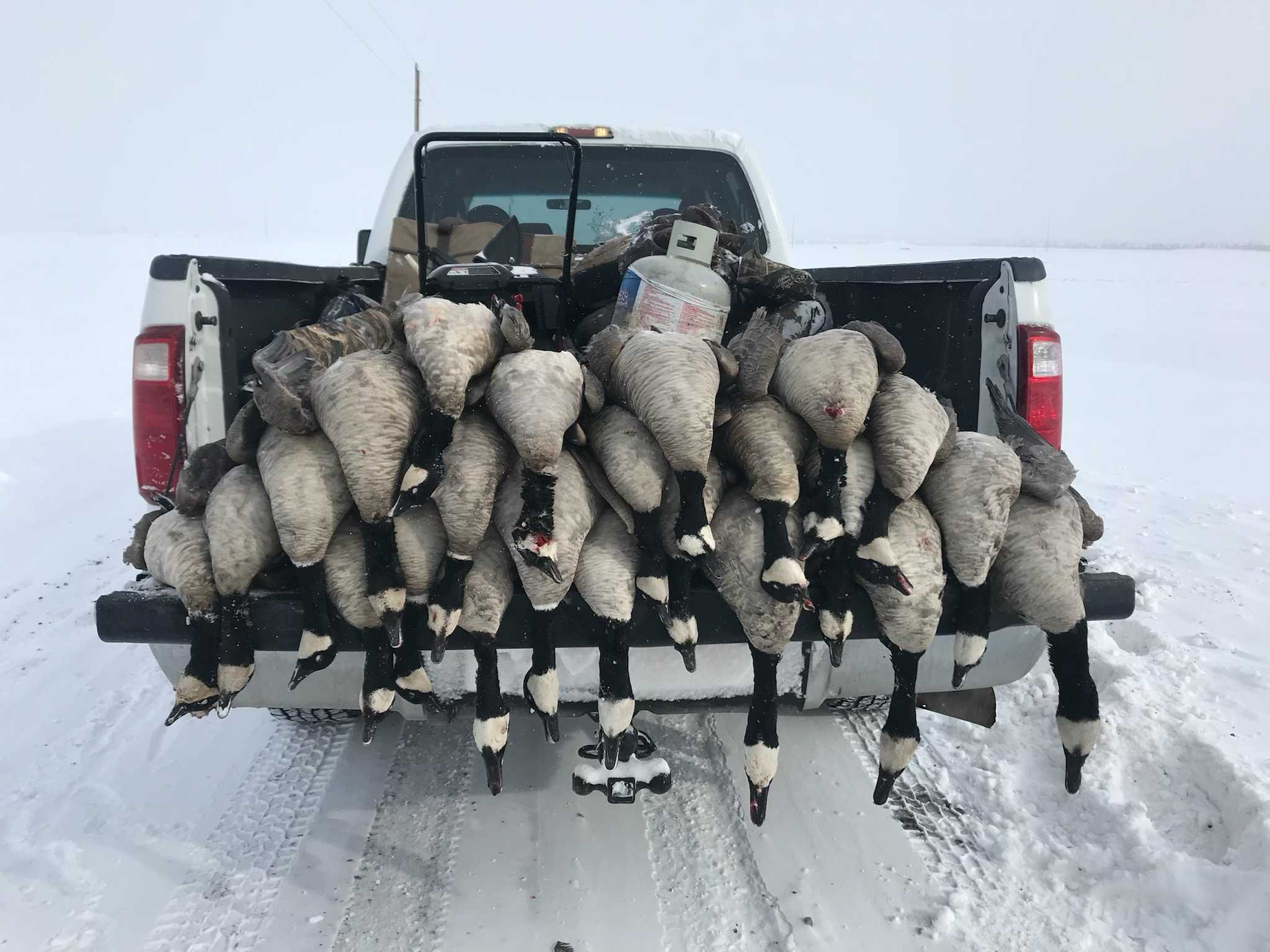
What is your background in goose hunting:
-I’ve grown up learning to goose hunt here in the front range. I’ve never been on a guided hunt so everything I know was either taught to me by my dad or lessons I’ve learned through trial and error. I have always seen success here in the front range. It isn’t always 5-man limit success, but with the high population of birds in this area, every day out can be stellar.
How is goose hunting in the front range of CO and WY different from other places?
-Apart from the obvious geographical differences, my experience is that the goose population here in the Front Range sees more consistent pressure throughout the season than in many other places. Birds here see tons of decoy spreads every week and hear every call out there. The front range also has a greater population of Canada Geese, whereas if you head to Eastern Colorado, you’ll find a lot more ‘specialty’ geese like snows and specks. Same goes for our properties in Southeast WY, they will have a migration of light geese that we just don’t see here in the front range.
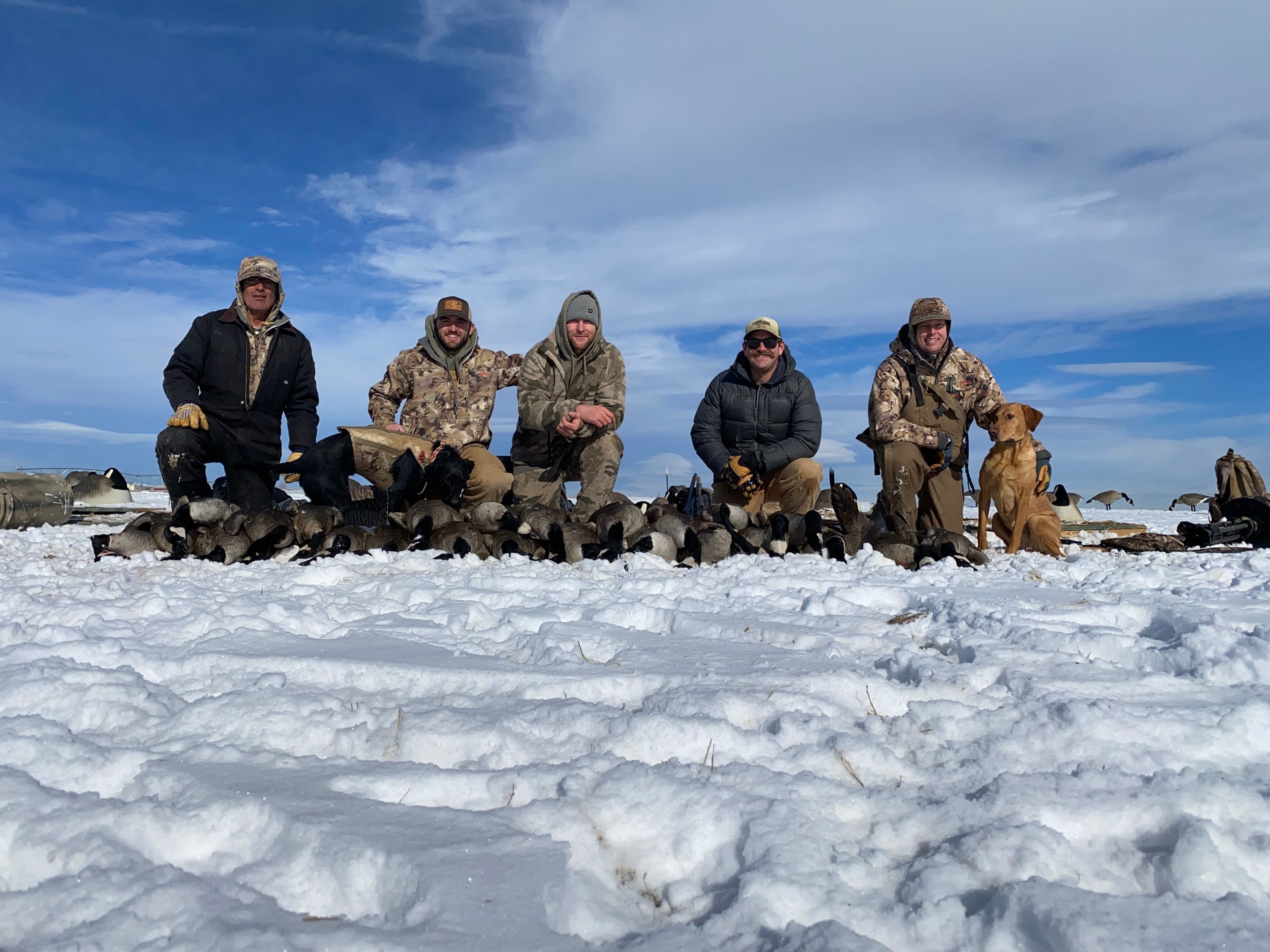
What are the best times to hunt geese throughout the season?
-This depends on where you are hunting or what you’re hunting over. Early season is great on big open water, since the geese will use it as a roost. As big water starts to freeze those birds will start to roost on rivers more, making the rivers a better hunt later in the year. Some of the best times I’ve found to hunt anywhere but especially fields are early season when the birds aren’t as wise to decoy spreads, and they commit with less hesitation. The days before and after a big cold front can produce. I pay attention to what the weather north of me is doing as well and know that any harsh cold they have up there will push a new migration of birds into my area. I will hunt the days and weeks directly following times like that. Late season can also be some of the best hunting of the year depending on the weather and what that year’s migration has looked like.
How many decoys do you need? What kind do you prefer? Sleepers, silhouettes, full bodies etc.
-I’m not one of those guys that believes in massive decoy spreads. I’ve hunted over 3-6 dozen my entire life and have seen amazing success. In fact, the only time I’ve ever set up one of those 50 dozen spreads, we shot 2 geese and it wasn’t worth it. Whatever I can fit in the bed of my truck is what I’ll set up. I believe that the way you set up your decoys plays more of an important role than the amount itself. I prefer full bodies with shells mixed in, whether those are sleepers or feeders I’m not picky. As of late I’ve begun using more silhouettes as well and I think they are incredibly handy. I mostly use them to distract from my pit or blind but also use them to fill in holes in my spread. Their one downfall is when the ground gets frozen, which it does here in Colorado often, they are hard to set. Other than that, I don’t have any issues using them, especially since large amounts of them take up almost no room.
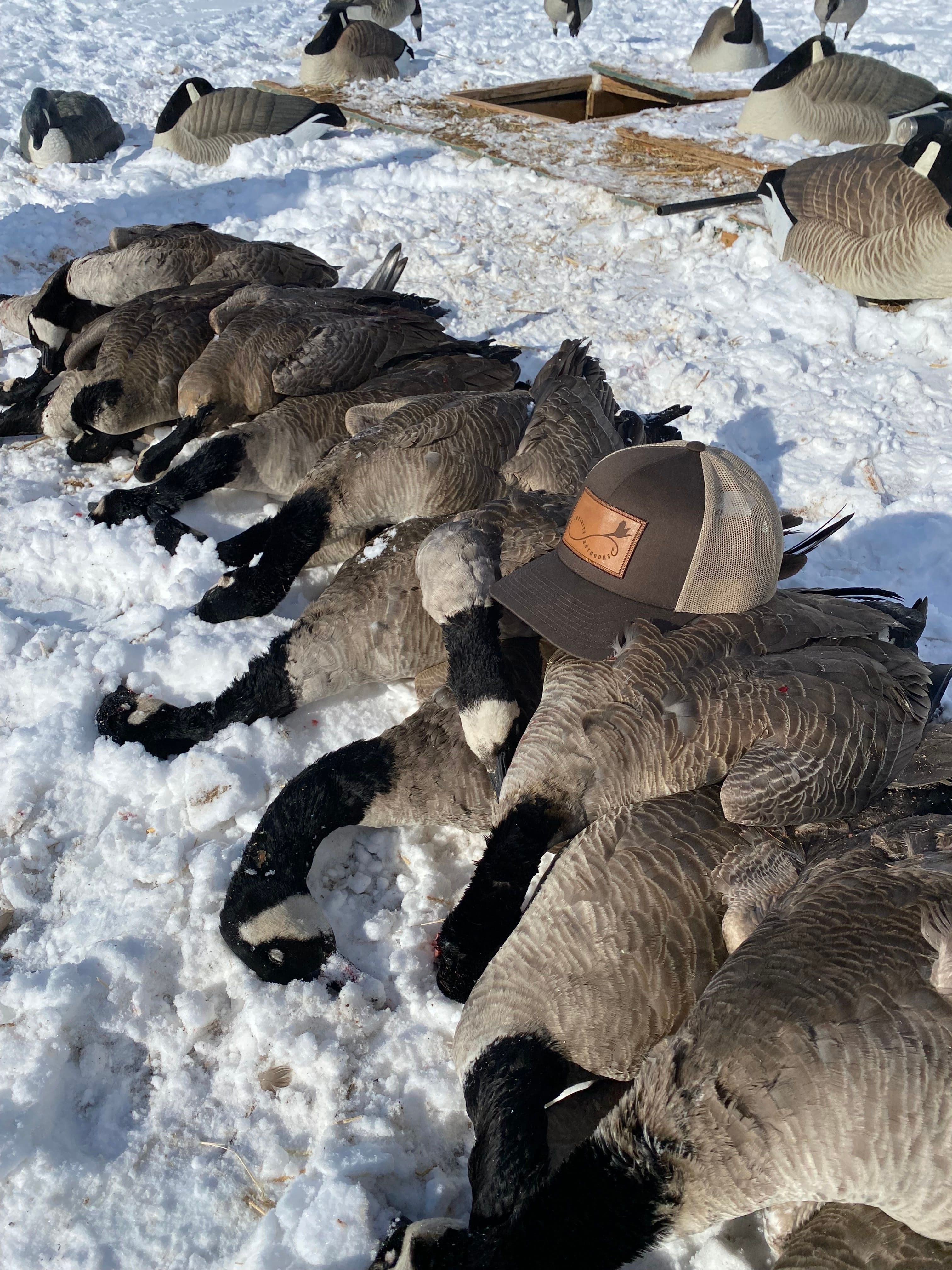
How do you set up your decoys? Does it change as the season progresses?
-I set my decoys up a little differently each time, mostly depending on the wind or weather. Geese will always land into the wind, and I work with that to give them a landing zone directly in my shooting lane. To accomplish that I will set up my spread with open areas behind and in front of my pit or blind. By doing that, most geese will look to get down in the open spots giving me a shot opportunity. Generally, almost all my decoys will face into the wind. If it is super windy, every single decoy is facing into the wind. On warm sunny days, my decoys will be more spread out from each other, and on miserable days I’ll bunch them up closer together. My favorite spreads to set up are the classic horseshoe look, or an X marks the spot type spread. The center of each is usually located on top of the pit. Earlier in the year it is popular to hunt over larger decoy spreads, and I think it produces well. As the season progresses and the birds in an area have wised up a little bit, it is more popular to hunt over smaller spreads. By that time, they’ve seen all the big black blobs in fields and are a lot less interested in them.
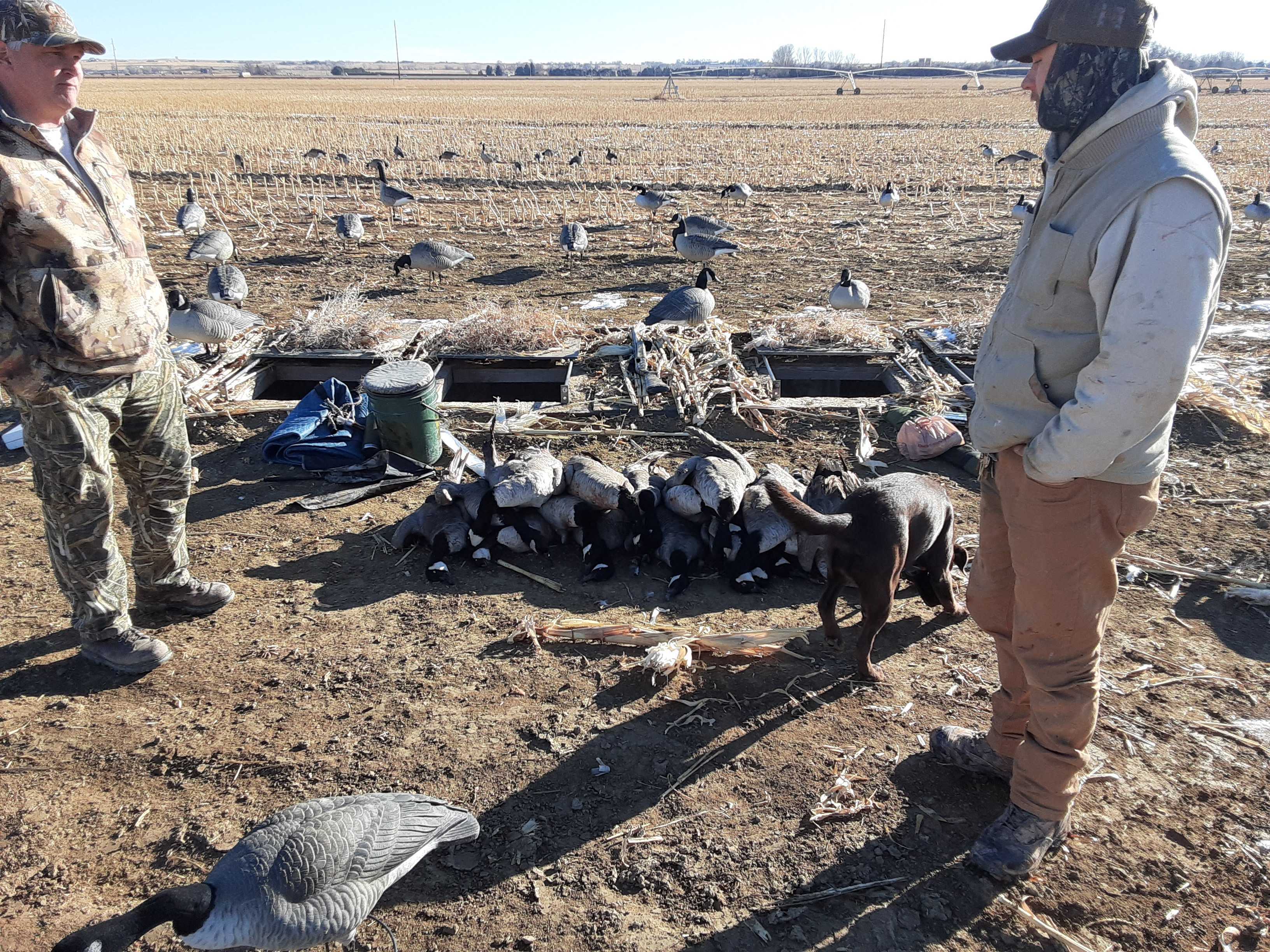
Do you like to hunt rivers or fields? Pit or layouts?
-Personally, I love to hunt in a field out of a pit. That’s what I grew up doing and will never be mad at a day spent by the heater with some coffee and donuts. A pit is also a good way to introduce youth or new hunters to the sport, which is something I enjoy even more than hunting for myself. It can be a calm, comfortable and warm environment which is better for people who aren’t yet used to freezing for hours. However, I enjoy being challenged by something different and have seen success both out of layout blinds, and on open water. A river or lake that is used as a roosting spot by the geese can be an absolute blast if it is hunted right. By that I mean waiting to set up until the birds leave the roost and waiting on their return. We’ve shot many limits in short amounts of time hunting a roosting spot. Many people think that river hunting for geese isn’t productive, but that just isn’t true. A good sandbar and open water are all they need to pile into any spot.
Do you call a lot? Or flag?
-If I was better at calling, I would call a lot more. Unfortunately, I’m not great at it so I stick to the very basic goose noises and very scarcely will I call. I firmly believe that bad calling is much more harmful than not calling at all. My dad has always been one of those ‘flag em to the ground’ good ol’ boys, and because of that I will choose flagging over calling any day. If I forget my calls at home, I don’t even sweat it but if I get out there without my flag, I don’t feel confident in the hunt. Having the geese see movement in the spread is more important to me than making noise.
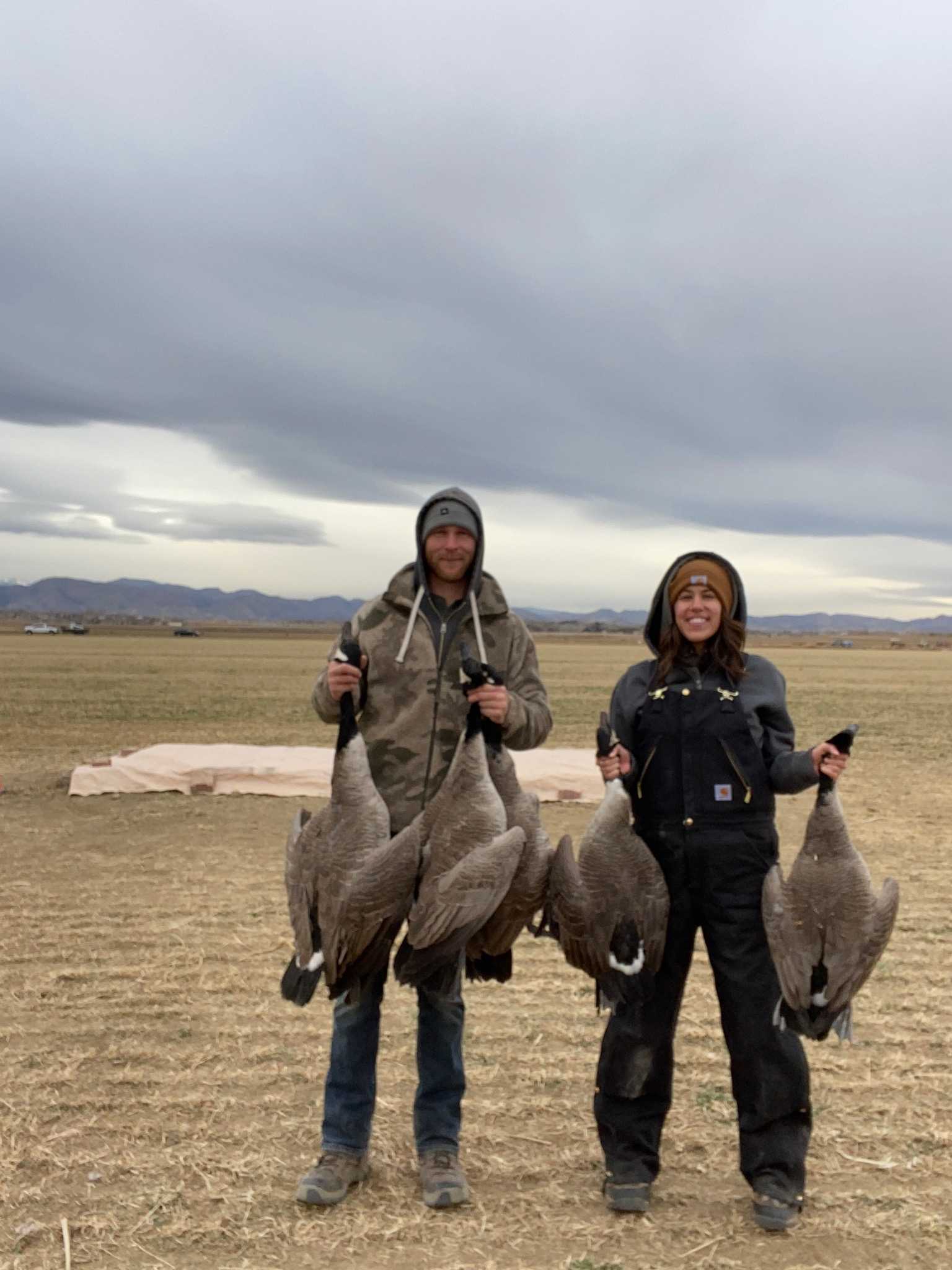
Do you like to hunt in the mornings or evenings? What type of weather is best?
- More often than not, I hunt in the morning. The front range is generally the same most days, with a few early morning flyers followed by a great big morning flight. After that it is mostly field hopping birds, or you might get lucky and pull some out of a group that’s headed back to the water for the middle of the day. That being said, I’ve had plenty of days late in the season that I spent 8 hours in a pit only to have the big flight happen at 3:00 in the afternoon.
I prefer to hunt in rough weather, or anything that will keep the birds from flying a mile high. To get them into shooting range on a blue bird day is tough, since they have all the time in the world to drop elevation and check out every detail of your decoy spread. Hard snows, fog, or heavy winds will keep them from flying so high and gives them a sense of urgency to get out of the air. They’ll spend less time analyzing a spread and be more open to committing. Again, even though I say that, I have had my fair share of days without a cloud in the sky that produced great hunts.
Favorite way to cook them?
-For years we turned all of our goose meat into whole meat jerky, using the dehydrator and letting the meat marinate for 48 hours before drying. It was either that or we would put all the meat together and make sausage or meat sticks out of it. I’ve also enjoyed a few grilled goose breasts, cooked medium rare and drizzled with a cooked down plum sauce. I started dating a gal who is an amazing cook which has widened my horizons. Next on the menu is either going to a type of sous vide, or maybe a waterfowl nacho dish, whichever I can convince her of will be fun to cook!
Anything else you want to add that we didn’t cover?
-Can’t kill ‘em from the couch. Waterfowl hunting is some of my favorite for the very reason that any given day has potential, so my biggest recommendation is to just give it a shot when you can. It is also the type of hunting that can be done with big parties and doesn’t require much stealth, which makes it perfect for a day out with your friends and family or introducing a young hunter to the outdoors. On top of that, the waterfowl hunting family is huge! There are always folks looking to hunt with new people and make new friends, and what better way than to bond over a hunt.
If you are looking for a new place to hunt, visit Infiniteoutdoorsusa.com to find a great new waterfowl property near you!